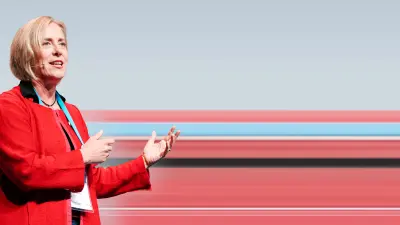Tiny technology with considerable value

How Dr. Reinhard Neul and his team use innovative sensor technology to make the Internet of Things a reality.

In addition to the team members, the research environment is extremely important to Dr. Neul, who is involved in the development process from the initial brainstorming right through to the product development. “The Renningen location offers everything that cutting-edge research needs – like a cleanroom, for example, where we can produce and test prototypes in perfect conditions. On top of that, the location’s campus structure promotes the interdisciplinary exchange of ideas and opinions with countless specialists. We have a real playground for scientists here, where we all ambitiously work on the technologies of the future together.”
“A real playground for scientists.”
With tasks as complex as these, it isn’t surprising that Dr. Neul’s team consists of experts from numerous different fields. “Many colleagues’ backgrounds are in the fields of engineering and natural sciences, like electric engineering, mechanical engineering, and physics. In addition, the team also includes software experts that play a key role in enhancing the sensor systems’ performance with new evaluation algorithms. Before we begin manufacturing prototypes, they first work on numerous simulations – using the finite element method or applications like MATLAB and various specialized tools at all levels of abstraction.”
3,000 developers
work on the Internet of Things at Bosch.
Dr. Reinhard Neul

Born in 1958, studied electrical engineering at the University of Stuttgart and received his PhD in the field of technical cybernetics. Neul has been working in technical research at Bosch since 1992 and today is project head for innovative sensor technology.
Dr. Neul, who has been with Bosch since 1992, has worked on the development of MEMS since the very beginning. “I am particularly proud of what we have contributed to electronic stability control (ESC) – a contribution that has had a positive impact on accident statistics.” But making everyday life safer isn’t the only focus of his research, as the potential applications in the health-care sector demonstrate: “The possibilities range from sending a notification in the event that someone requiring care has fallen down to rapid pathogen detection in hospitals.” And the mini sensors’ relevance can also be seen in the production figures, with a total of four million MEMS produced at Bosch in Reutlingen alone – each and every day.

“We find them in everyday things like cars, smartphones, and many other products. They detect movements, temperature, acoustic signals, and lots of other data, and use them to take action with the help of suitable software applications. In other words, they act as the sensory organs of technical objects.” This makes MEMS the foundation of the Internet of Things – not just in the field of consumer goods, but also for Industry 4.0 or automated driving. “We are currently developing new angular rate sensors for self-driving cars that, in conjunction with additional inertial sensors, LIDAR, and satellite navigation, collect all the of the vehicle’s driving-related data. As a result, the control system always knows the position and movement of the vehicle and other road users, and can react to this information accordingly.”
“We’re teaching things to feel.”

When Reinhard Neul examines the devices he has most recently developed, he looks almost like a surgeon in his protective suit, gloves, and hood. They are so small, a single speck of dust can prevent them from functioning properly. “MEMS are microelectromechanical systems that we can use to build tiny sensors,” says Dr. Neul, who holds a doctorate in electrical engineering.


